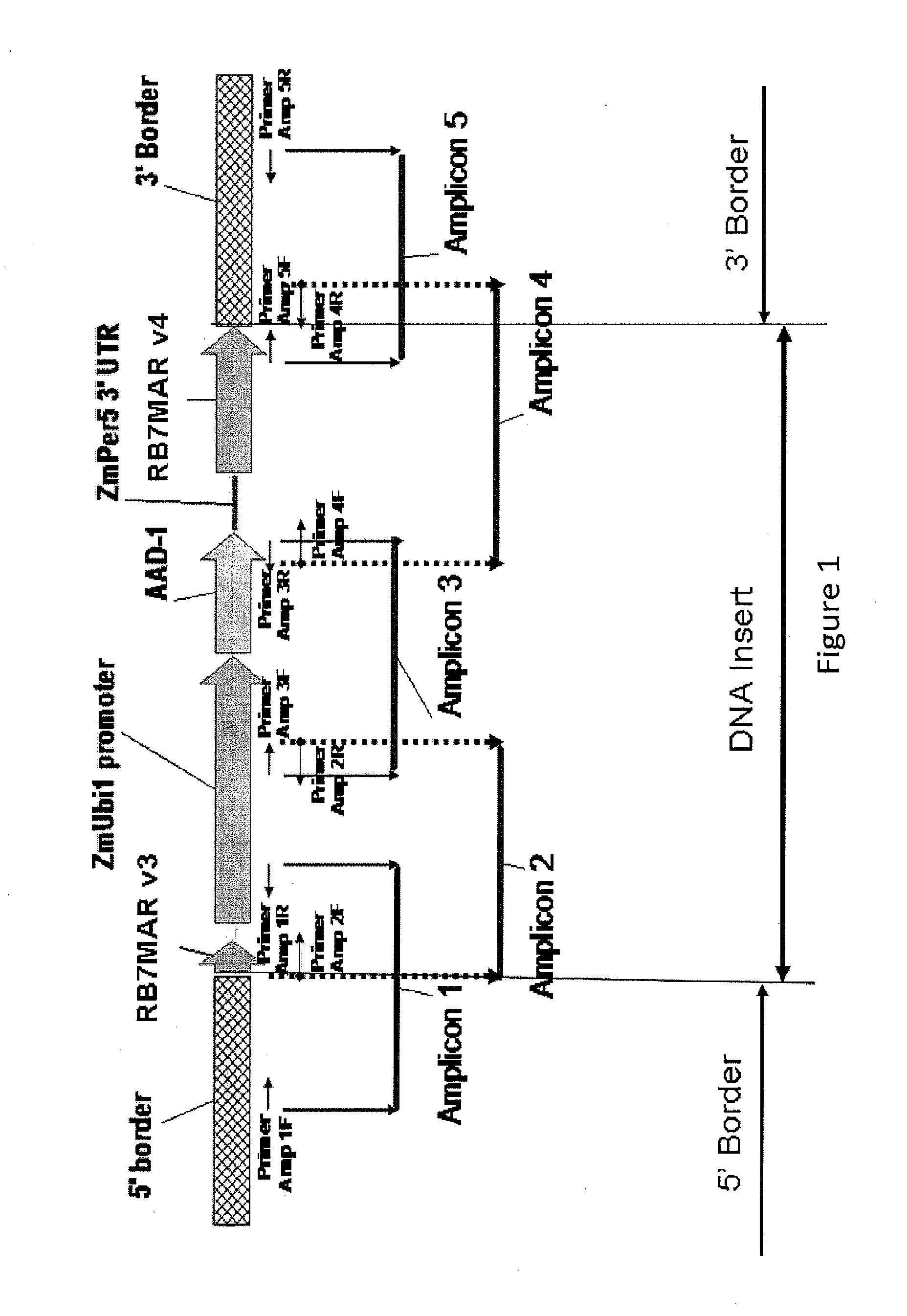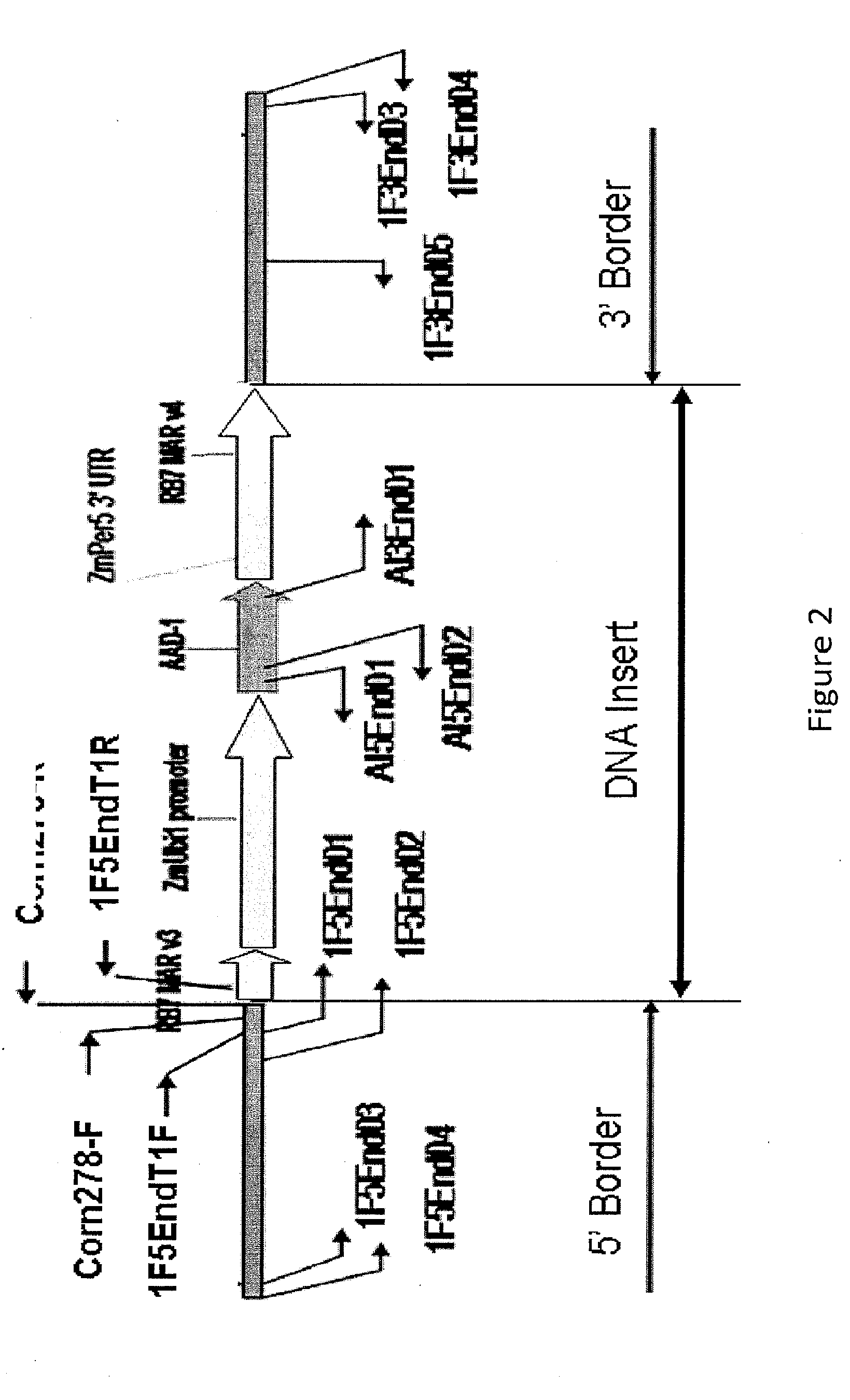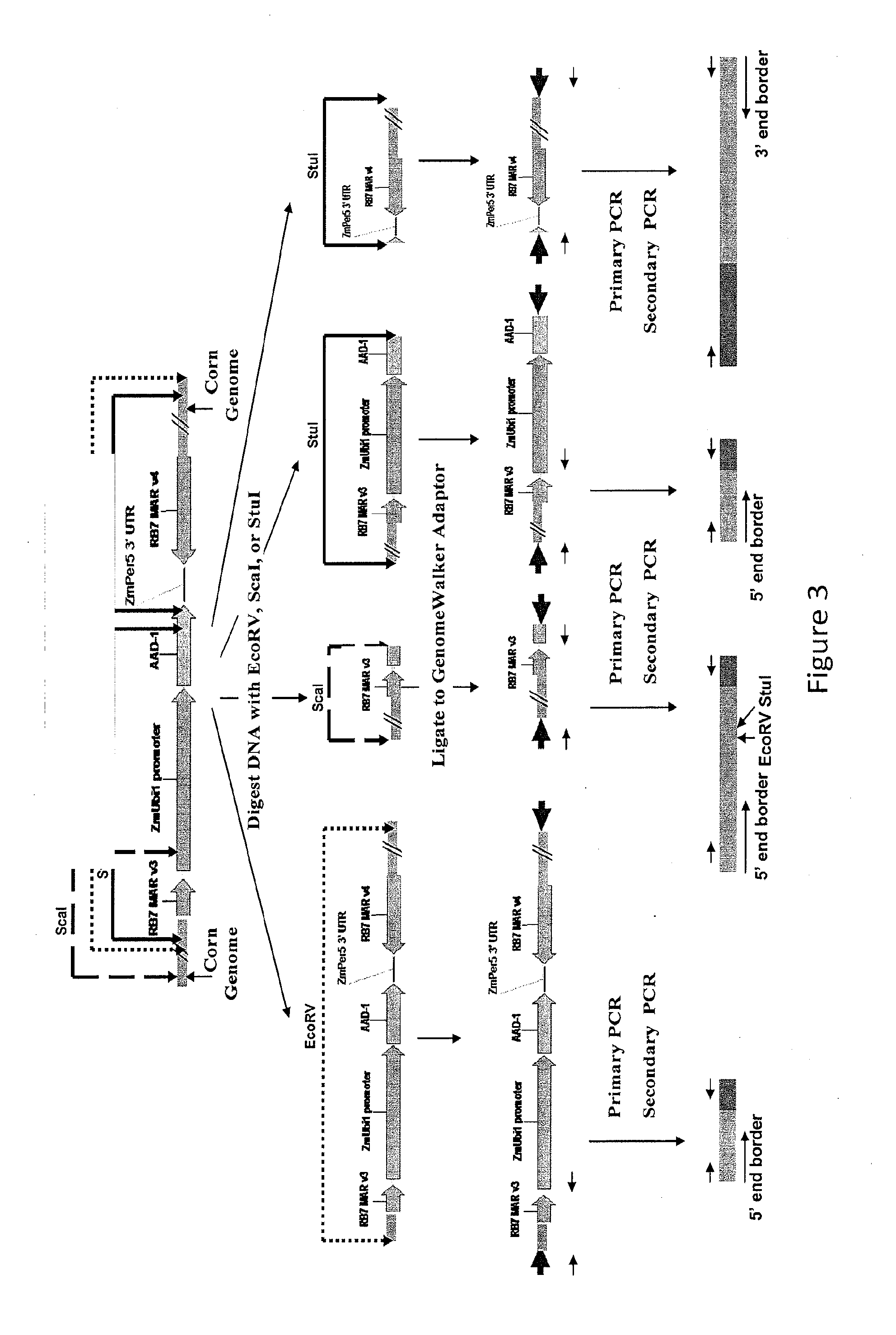Detection of aad1 event das-40278-9
- Summary
- Abstract
- Description
- Claims
- Application Information
AI Technical Summary
Benefits of technology
Problems solved by technology
Method used
Image
Examples
example 1
[0111]An event specific Taqman assay was developed to detect the presence of maize event DAS-40278-9 and to determine zygosity status of plants in breeding populations. To develop an event specific assay, specific Taqman primers and probes were designed according to the DNA sequences located in the 5′ insert-to-plant junction. For specific detection of DAS-40278-9, a 73-bp DNA fragment that spans this 5′-integration junction was amplified using two specific primers. The amplification of this PCR product was measured by a target-specific MGB probe synthesized by Applied Biosystems containing the FAM reporter at its 5′end. Specificity of this Taqman detection method for AAD-1 corn event DAS-40278-9 was tested against 16 different AAD-1 corn events and non-transgenic corn variety in duplex format with the corn specific endogenous reference gene, Invertase.
example 1.1
gDNA Isolation
[0112]gDNA samples of 16 different AAD-1 corn events and non-transgenic corn varieties were tested in this study. gDNA was extracted with two approaches, Qiagen kit or CTAB. For the gDNA samples extracted with the Qiagen kit, eight corn fresh leaf discs were used for gDNA extraction according to a modified Qiagen DNeasy 96 Plant Kit protocol. For the gDNA samples extracted by using CTAB procedure, about 0.3 g lyophilized leaf tissue was used following a protocol from Permingeat et al., 1998. gDNA was quantified with the Pico Green method according to vendor's instructions (Molecular Probes, Eugene, Oreg.). The gDNA samples were diluted with DNase-free water resulting in a concentration of 10 ng / μL for the purpose of this study.
example 1.2
Taqman Assay and Results
[0113]Specific Taqman primers and probes were designed for the DAS-40278-9 event specific Taqman assay. These reagents can be used with the conditions listed below to detect AAD-1 corn event DAS-40278-9. Table 1 lists the primer and probe sequences that were developed specifically for the detection of event DAS-40278-9.
TABLE 1PCR Primers and ProbesNameDescription5′ to 3′ sequenceEvent Target ReactionCorn278-FForwardSeq ID NO: 2:Primer5′- ATTCTGGCTTTGCTGTAAATCGT-3′Corn278-RReverseSeq ID NO: 3:Primer5′- TTACAATCAACAGCACCGTACCTT-3′Corn278-ProbeSeq ID NO: 4:Probe5′- FAM- CTAACCTTCATTGTATTCC-MGB- 3′Invertase Reference System ReactionIVFForwardSeq ID NO: 5:Primer5′- TGGCGGACGACGACTTGT -3′IVRReverseSeq ID NO: 6:Primer5′- AAAGTTTGGAGGCTGCCGT -3′IV-ProbeSeq ID NO: 7:Probe5′- HEX-CGAGCAGACCGCCGTGTACTTCTACC-BHQ2 -3′
[0114]The multiplex PCR conditions for amplification are as follows: 1×PCR buffer, 0.5-2.5 mM MgCl2, 0.2 mM dNTP, 0.2 μM Primer Corn-278-F, 0.2 μM Primer Cor...
PUM
| Property | Measurement | Unit |
|---|---|---|
| temperatures | aaaaa | aaaaa |
| temperature | aaaaa | aaaaa |
| temperature | aaaaa | aaaaa |
Abstract
Description
Claims
Application Information
 Login to View More
Login to View More - R&D
- Intellectual Property
- Life Sciences
- Materials
- Tech Scout
- Unparalleled Data Quality
- Higher Quality Content
- 60% Fewer Hallucinations
Browse by: Latest US Patents, China's latest patents, Technical Efficacy Thesaurus, Application Domain, Technology Topic, Popular Technical Reports.
© 2025 PatSnap. All rights reserved.Legal|Privacy policy|Modern Slavery Act Transparency Statement|Sitemap|About US| Contact US: help@patsnap.com



